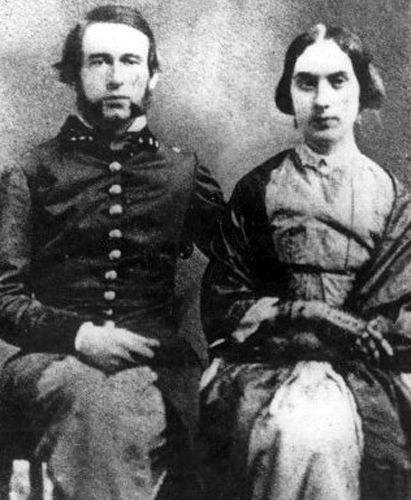
Echoes in the Dust: The Legend of Brennan’s Prairie and Washington’s Fading Frontier Wars
From the sun-baked mesas of the Southwest to the dense forests of the Pacific Northwest, America’s landscape is woven with tales of courage, conflict, and the enduring human spirit. These are the legends, often born from the crucible of frontier life, where the line between historical fact and campfire lore blurs with the passage of time. In the vast, wild expanse of Washington Territory, one such legend whispers from the prairies, a name that evokes the violent clash of cultures and the desperate struggle for survival: Brennan’s Prairie.
While no single, grand "Battle of Brennan’s Prairie" is prominently etched in the annals of widely accepted historical accounts, the name itself carries the weight of a thousand untold stories, representing the myriad of skirmishes, ambushes, and desperate stands that defined the mid-19th century in what would become Washington State. It stands as a potent symbol of the Yakama War and the broader "Indian Wars" – a period of intense and often brutal conflict between indigenous nations and encroaching American settlers and military forces. To understand the legend of Brennan’s Prairie is to delve into the very heart of America’s westward expansion, a story of ambition, betrayal, resistance, and the tragic human cost of a nation’s relentless march towards its perceived destiny.
The Crucible of the Frontier: Washington Territory in the Mid-19th Century

The 1850s were a transformative decade for the Pacific Northwest. The concept of Manifest Destiny, the belief in America’s divinely ordained right to expand across the continent, fueled a relentless tide of migration. The lure of gold, discovered in California in 1848 and later in British Columbia and eastern Washington, brought a flood of prospectors, settlers, and speculators into territories long inhabited by thriving Indigenous nations.
Washington Territory, established in 1853, became a focal point for this expansion. Its first governor, Isaac Stevens, was a man of immense ambition and energy, tasked with surveying for a transcontinental railroad route and, crucially, negotiating treaties with the region’s diverse Native American tribes. Stevens’ approach was often characterized by haste and coercion. He sought to consolidate vast tribal lands into smaller reservations, opening up the majority for white settlement.
The tribes of eastern Washington – the Yakama, Palouse, Spokane, Klickitat, Walla Walla, Nez Perce, and others – had lived on these lands for millennia. Their lives were intrinsically linked to the Columbia River and its tributaries, their salmon runs, the vast camas prairies, and the abundant game. They had complex social structures, sophisticated trade networks, and a deep spiritual connection to their ancestral territories. For them, the treaties proposed by Stevens were not merely land deals but an existential threat to their way of life, their sovereignty, and their very identity.
As more settlers poured in, often disregarding treaty boundaries and tribal rights, tensions escalated. The discovery of gold near Colville in 1855 was the spark that ignited the powder keg. Miners trespassed on tribal lands, committing acts of violence and theft. The murder of a Yakama chief’s nephew by a group of miners, and the subsequent retaliation by the Yakama, set off a chain reaction that plunged the territory into a brutal, three-year conflict known as the Yakama War.
Brennan’s Prairie: A Symbol of Untold Skirmishes
While historical records meticulously detail major engagements like the Battle of Four Lakes or the Battle of Spokane Plains, the name "Brennan’s Prairie" likely represents one of the countless smaller, localized confrontations that never made it into official military reports but etched themselves into the collective memory of the settlers and Indigenous peoples alike. These were the daily realities of frontier warfare: ambushes on lonely trails, desperate defenses of isolated homesteads, raids on tribal encampments, and the constant, gnawing fear of the unknown.
Imagine a small, verdant prairie, perhaps nestled amidst the rolling hills and sparse forests of eastern Washington, a place that offered good grazing for horses or a strategic vantage point. Perhaps it was named after a lone settler family, the Brennans, who attempted to carve out a life there, only to be caught in the maelstrom of conflict. Or perhaps "Brennan" was a military scout, a trader, or a trapper whose name became synonymous with a particularly harrowing encounter.
The legend might speak of a wagon train, slowly traversing the prairie, suddenly besieged by a war party. Or a small detachment of soldiers, on patrol, finding themselves surrounded and fighting for their lives against overwhelming odds. These were not battles with clear lines of engagement but fluid, brutal encounters where survival often depended on quick wits, accurate aim, and sheer desperation. Casualties were often high, and the psychological toll immense.

Such a legendary skirmish at Brennan’s Prairie would encapsulate the terror and the heroism of the time: the crack of rifles echoing across the open land, the war cries mingling with the shouts of men, the smell of gunpowder and blood, and the raw struggle for life against a backdrop of breathtaking natural beauty. It would be a story passed down through generations, embellished with each telling, becoming a cautionary tale, a testament to bravery, or a lament for lost lives.
The Reality of the Yakama War: Blood on the Prairies
The broader conflict, the Yakama War, provides the historical context for the legends of places like Brennan’s Prairie. It was a war characterized by its ferocity and the stark cultural differences between the combatants.
Initially, the Yakama, led by their influential and shrewd chief, Kamiakin, alongside allied tribes, achieved some notable successes. In October 1855, a force led by Major Granville O. Haller was decisively defeated near Toppenish Creek, suffering significant casualties and being forced to retreat. This early victory emboldened the tribes and underscored the formidable resistance they could mount.
However, the tide began to turn with the arrival of Colonel George Wright, a seasoned military officer, in 1858. Wright launched a relentless campaign designed to break the will of the Indigenous nations. His tactics were brutal and effective. At the Battle of Four Lakes (August 1858) and the Battle of Spokane Plains (September 1858), Wright’s forces, armed with superior weaponry, including howitzers and long-range rifles, inflicted devastating defeats on the combined tribal forces.
Wright’s campaign was not merely about winning battles; it was about total subjugation. He ordered the systematic destruction of tribal property, including the burning of villages and, most famously, the slaughter of hundreds of Native American horses, their primary mode of transportation, hunting, and wealth. This act, carried out near what is now known as Horse Slaughter Camp, was a devastating blow to the tribes, crippling their ability to hunt, travel, and resist. "We killed about 800 horses," Wright wrote in a dispatch, "and I think this will do more to subdue the Indians than anything else that could have been done."
The human cost was immense. Indigenous communities faced not only direct combat casualties but also starvation, disease, and forced displacement onto ever-shrinking reservations. For the settlers, the war was a period of constant fear, vigilantism, and the brutalization of frontier life. Both sides committed atrocities, fueled by fear, revenge, and a profound misunderstanding of each other’s cultures and intentions.
Perspectives and the Forging of Legends
The legend of Brennan’s Prairie, like many frontier tales, is multifaceted, shaped by the perspectives of those who told it.
For the Indigenous peoples, stories of such skirmishes would be woven into their oral histories, often serving as reminders of their ancestors’ bravery, their struggle for their homelands, and the injustices they faced. They would remember the strategic ingenuity, the desperate measures taken to protect their families, and the sacred connection to the land that drove their resistance. Chief Kamiakin, a key figure in the Yakama War, eloquently captured the sentiment of his people when he stated, "I will not sign away the graves of my fathers and the homes of my children." This deep-seated connection to the land and their heritage was at the heart of their fight.
For the settlers, such legends would become tales of pioneer resilience, the bravery of individuals facing savage odds, and the constant threat posed by the "Indian menace." They would reinforce the narrative of white expansion as a civilizing mission, often overlooking the colonial violence inherent in their presence. These stories would solidify their own identity as hardy frontiersmen and women, overcoming adversity to build a new society.
The journalistic style of the mid-19th century also played a crucial role in shaping these narratives. Local newspapers, often biased and sensationalized, would report on skirmishes, sometimes exaggerating details or casting Native Americans purely as aggressors. These reports, read by a public hungry for news from the frontier, contributed to the legend-making process, transforming minor incidents into dramatic sagas.
Over time, the specifics of an event like the "Battle of Brennan’s Prairie" might fade, but the emotional resonance remains. It becomes a composite of all the small battles, the unrecorded acts of heroism and tragedy, representing the collective memory of a brutal period. It’s a place name that, even without a definitive historical battle attached to it, conjures images of the conflict, the danger, and the raw, untamed nature of the frontier.
Legacy and Modern Relevance
Today, the lands of Washington State bear the scars and the beauty of this tumultuous past. The prairies still stretch, the rivers still flow, but the cultural landscape has been irrevocably altered. The Indigenous nations of Washington, though profoundly impacted, have endured, retaining their cultural identities and continuing their struggle for sovereignty and recognition.
The legend of Brennan’s Prairie, whether a specific historical event or a symbolic one, serves as a powerful reminder of several critical aspects of American history:
- The brutal reality of westward expansion: It was not an empty land awaiting settlement but a vibrant world violently disrupted.
- The resilience of Indigenous peoples: Despite overwhelming odds, they fought valiantly to protect their way of life.
- The complex nature of historical truth: Legends often fill the gaps left by official histories, offering emotional and symbolic truths even when factual details are scarce.
- The importance of listening to multiple narratives: Understanding the frontier wars requires acknowledging the perspectives of both Indigenous peoples and settlers, moving beyond simplistic hero-villain dichotomies.
In a contemporary context, the legend of Brennan’s Prairie encourages us to look beyond the grand narratives of nation-building and to seek out the individual stories, the localized conflicts, and the human experiences that often get lost in the historical record. It invites us to consider how places, even seemingly unremarkable ones, can become repositories of memory, holding echoes of the past within their very names.
The legend of Brennan’s Prairie, therefore, is not merely a tale of a forgotten battle. It is a microcosm of the larger American story, a reminder that the land itself holds memory, and that the legends we tell ourselves about our past continue to shape our present and future. As the wind whispers across the vast prairies of Washington, it carries not just the rustle of grass, but the faint, enduring echoes of a time when the very ground was contested, and legends were forged in the crucible of conflict.


